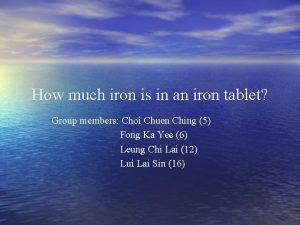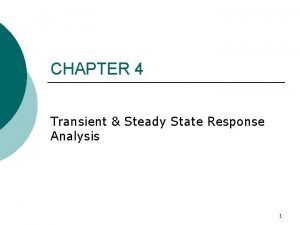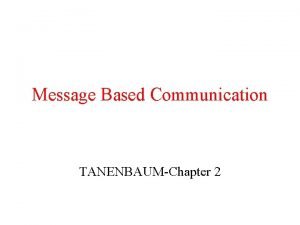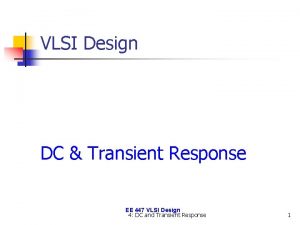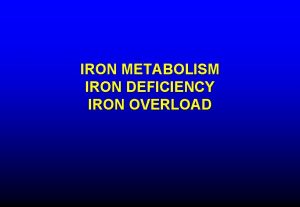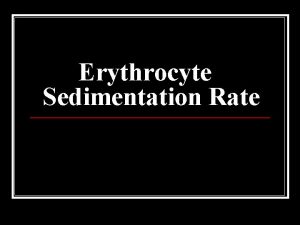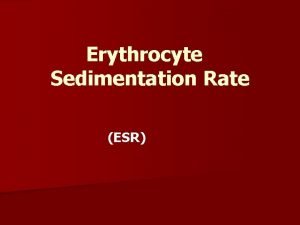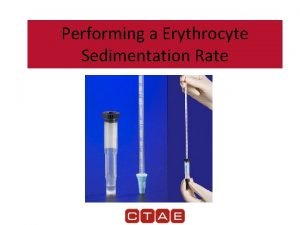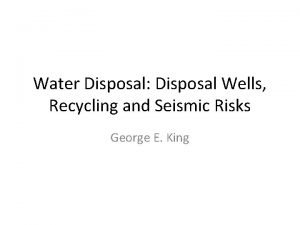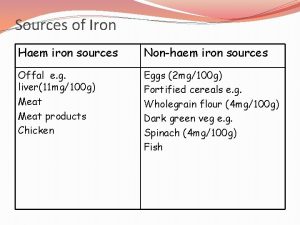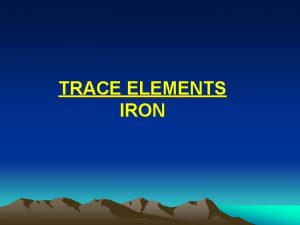Ondemand erythrocyte disposal and iron recycling requires transient










- Slides: 10

On-demand erythrocyte disposal and iron recycling requires transient macrophages in the liver Igor Theurl 1– 3, 17, Ingo Hilgendorf 1, 2, 4, 17, Manfred Nairz 1, 2, 17, Piotr Tymoszuk 3, David Haschka 3, Malte Asshoff 3, Shun He 1, 2, Louisa M S Gerhardt 1, 2, Tobias A W Holderried 5, Markus Seifert 3, Sieghart Sopper 6, Ashley M Fenn 1, 2, Atsushi Anzai 1, 2, Sara Rattik 1, 2, Cameron Mc. Alpine 1, 2, Milan Theurl 7, Peter Wieghofer 8, 9, Yoshiko Iwamoto 1, 2, Georg F Weber 1, 2, Nina K Harder 1, 2, Benjamin G Chousterman 1, 2, Tara L Arvedson 10, Mary Mc. Kee 1, 11, Fudi Wang 12, Oliver M D Lutz 13, Emanuele Rezoagli 14, Jodie L Babitt 1, 11, Lorenzo Berra 14, Marco Prinz 8, 15, Matthias Nahrendorf 1, 2, Guenter Weiss 3, Ralph Weissleder 1, 2, 16, Herbert Y Lin 1, 11 & Filip K Swirski 1, 2 Nature Medicine 22, 945– 951 (2016) doi: 10. 1038/nm. 4146 Journal Club 07. 09. 2016, Andreas Hüschelrath

Introduction Red blood cell production requires a sufficent supply of iron Most of the iron needed for erythropoiesis is recycled by the reticuloendothelial system in the spleen and liver depending on a transmembrane iron export protein (FPN 1) Disease associated erythrocyte damage may lead to a liberation of large quantities of iron, which is toxic in its nontransferrin-bound form Hypothesis: Vertebrates have evolved a mechanism that can adapt to fluctuations in erythrocyte integrity

Figure 1

Complementary findings • • • t. MΦ only appear in the liver, neither in the spleen, bone marrow, kidney, lung or blood 1 week after s. RBC-challenge iron appears in a diffuse parenchymal pattern in hepatocytes Increase in iron levels corresponded to high levels of liver hepcidin (good marker) Figure 6

Figure 2

Figure 3

Figure 4

Summary • Ly-6 C(high) Monozyten and their progeny (t. MΦ – Monozyten and KC-like cells) propagate a – on-demand – high-capacity – liver-specific – transient – Dynamic erythrophagocytosis and iron recycling. • Requirements are cell-intrinsic and environmental triggers • Controls iron homeostasis during erythrocyte damage

Summary, supplementary figure 18

Comments Pros Cons • Comprehensive work for all aspects • Results are consistent and may lead to the above-mentioned summary • Small numbers in-vivo (n= 3 -6) • Only mice-modell and in-vitro human cells, similar testing for other mammals is missing Prospect: Better understanding of erythrophagocytosis in situations with stressed RBC (such as sepsis, frequent transfusion, inborn defects of erythrocyte stability) may lead to a new pharmacological approach.
 Erythrocyte sedimentation rate principle
Erythrocyte sedimentation rate principle Mature erythrocyte
Mature erythrocyte Ondemand 5
Ondemand 5 Success plan ondemand
Success plan ondemand Call center ondemand
Call center ondemand Mass of iron in an iron tablet
Mass of iron in an iron tablet Iron sharpens iron friendship
Iron sharpens iron friendship Transient and steady state response in control system
Transient and steady state response in control system Transient communication examples
Transient communication examples Persistent and transient communication
Persistent and transient communication Transient response in vlsi
Transient response in vlsi





